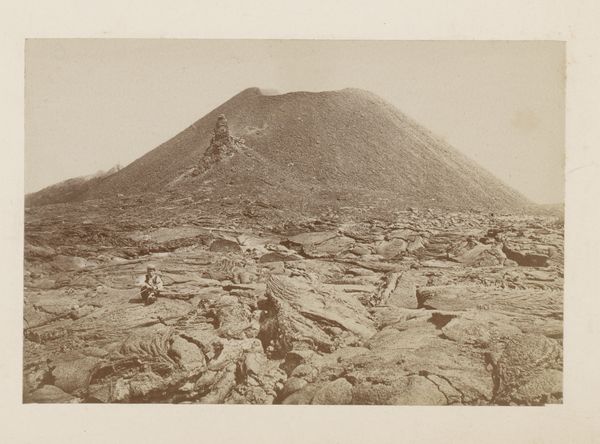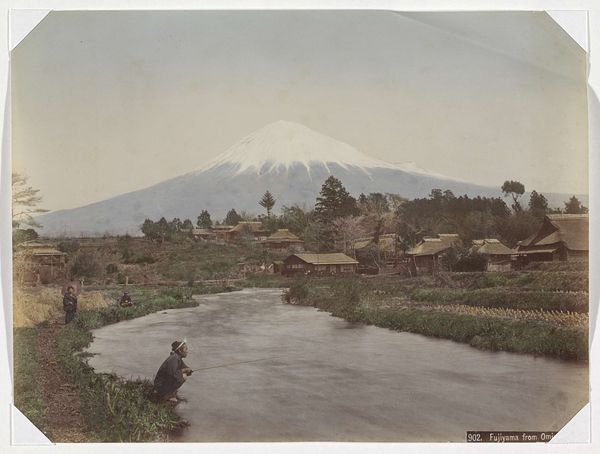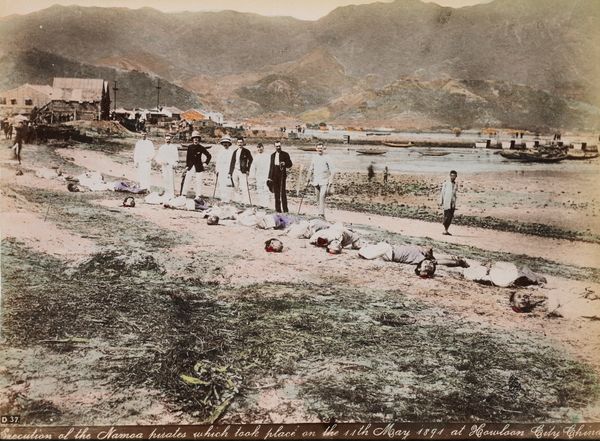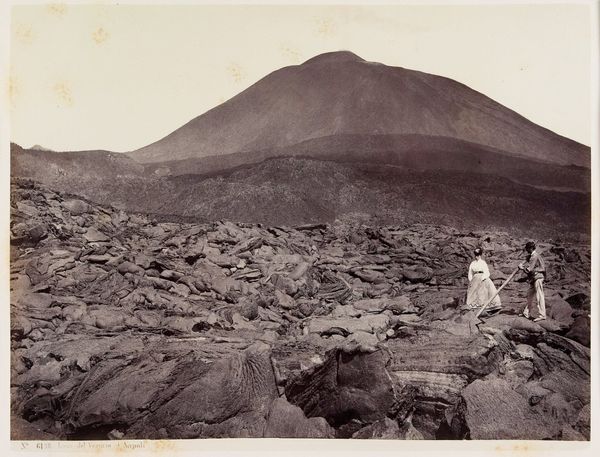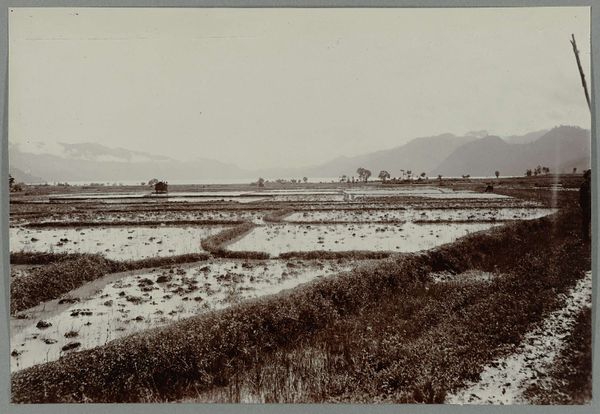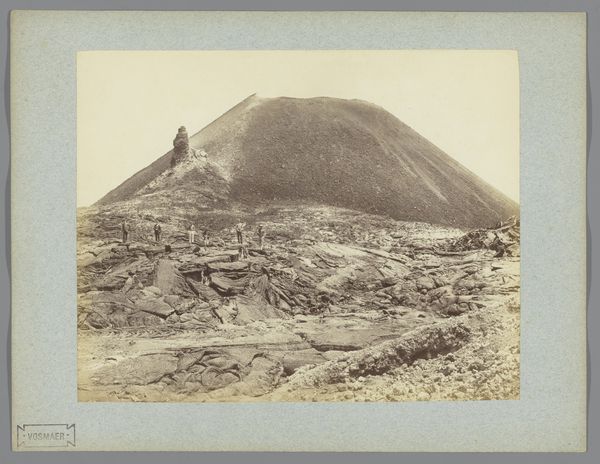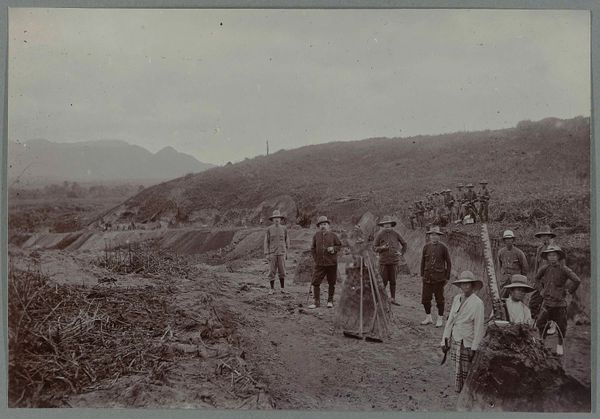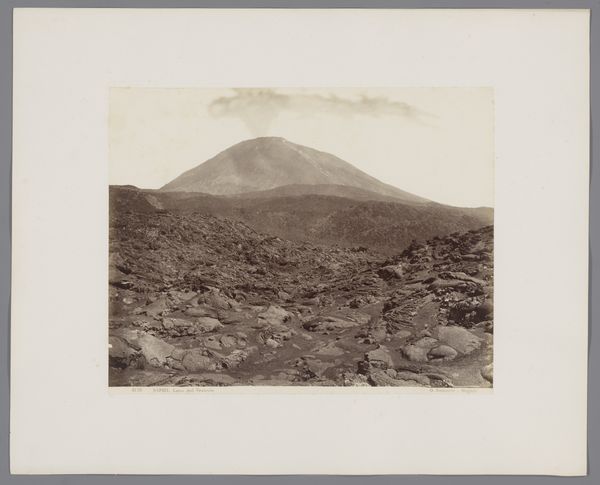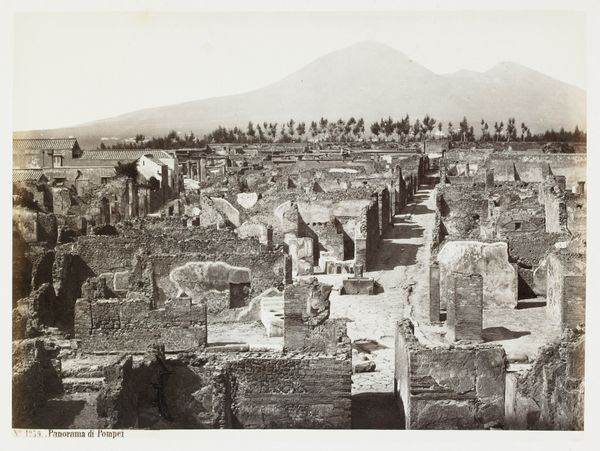
gelatin-silver-print, print, photography, gelatin-silver-print
#
excavation photography
#
surveyor photography
#
gelatin-silver-print
# print
#
impressionism
#
landscape
#
ukiyo-e
#
japan
#
outdoor photography
#
photography
#
gelatin-silver-print
#
public art photography
Dimensions: 9 x 13 x 1 1/2in. (22.9 x 33 x 3.8cm)
Copyright: Public Domain
Curator: This photography album at the Minneapolis Institute of Art gives us glimpses into life in Japan between the 19th and 20th centuries. The gelatin silver prints show diverse subjects including excavation and survey scenes. Editor: What strikes me immediately is how the massive scale of Mount Fuji looming in the background is balanced by the repetitive lines the fieldworkers are creating in the earth below. Curator: Indeed, Mount Fuji had a massive cultural significance in Japan, often serving as a symbol of national identity. To see it here behind fieldworkers reminds us about the social history. Editor: Absolutely. And consider how the photographer has used aerial perspective; Fuji is pale and almost hazy, but it has a very crisp outline that emphasizes how far away it is. The framing also creates a lovely sense of depth, starting with the immediate foreground all the way back to that distant mountain. Curator: You are right about how the aerial perspective gives off haziness. Also, it could show something about landscape as an ideology during Japan's shift from feudalism to modernity. This also makes me think about its impact on shaping narratives around Japan in travel, art and culture at this moment. Editor: It's also intriguing how they managed color, possibly through hand-tinting, on these gelatin silver prints. The earth tones give such a tangible, grounded presence while the people show a gentle contrast, yet still blend so they have a cohesiveness. The slight palette has visual tension. Curator: Good point, color definitely adds another layer! It reveals a romantic, idealized picture, and how such visual imagery was consumed among certain populations in the West and beyond. And what role did they play? That would be another good discussion point. Editor: Agreed. Considering all the points we have looked at so far, I’m now understanding new ideas of its formal organization while I listen to the story behind its history. Curator: Yes, and with a focus on cultural implications, we understand why this image made its appearance and can discuss and dissect it for more layers of understanding!
Comments
No comments
Be the first to comment and join the conversation on the ultimate creative platform.

